Stroud & District Clay Club
Shooting Skeet at Stroud & District Clay Club
Skeet
'Skeet' is the name given to a Clay target discipline, popular in the UK as it offers a variety of targets and is relatively easy to get started and hit some targets, but quite difficult to hit them all! Wikipedia has a useful article on Skeet.
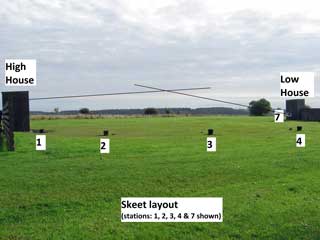
There are three varients of Skeet: English (or National) Skeet, Olympic Skeet and American (or NSSA) Skeet. All are shot on the same layout, as shown on the photo on the left. At Stroud & District Clay Club, we mainly shoot English Skeet and the rest of this description applies to English Skeet.
The Skeet Layout
As shown in the photograph, the layout is a semi-circle with two buildings: High House and the Low House to the left and right. From these houses, clay targets are thown and each shooter attempts to break them all. The High- and Low- houses are 21 yards apart. There are 25 targets in a Round (analogous to a round of golf, etc).
Shooting Skeet
Shooters, in a squad of up to six or seven, take turns to shoot from each of seven stands (1, 2, 3, 4 and 7 shown in the photo) which are equidistant around the semi-circle. Having shot from stand 1, they all move to stand 2, etc. Cartridges have a maximum load of 28g, with 24g and 21g being not uncommon and a shot-size of No 9 is common. When each shooter is standing on the stand (1, 2 ..7) and ready, they can load with one cartridge for a Single target, or two for a Pair. When ready, shooters shout 'Pull' and a target is released.
Stand 1
From Stand 1, four targets are presented:
● High House Single, then
● Low House Single, then a
● Simultaneous pair; High House target first.
At Stand 1, the High House target comes from above the shooter and moves rapidly away in the direction of (and slightly to the left of) the Low
House. When called for ('Pull') the Low House target appears and moves towards (and to the left of) the shooter.
Stand 2
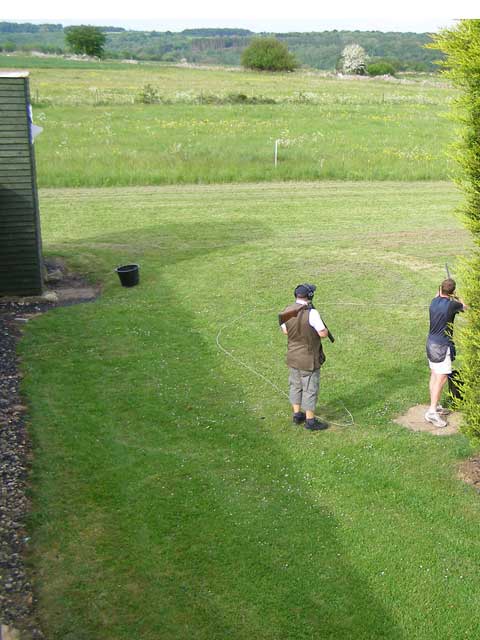
From Stand 2, four targets are presented:
● High House Single, then
● Low House Single, then a
● Simultaneous pair; High House target shot first.
At this stand the High House- and Low House-targets are moving across in front of the shooter.
Stand 3
From Stand 3, two targets are presented:
● High House Single, then a
● Low House Single.
Stand 4
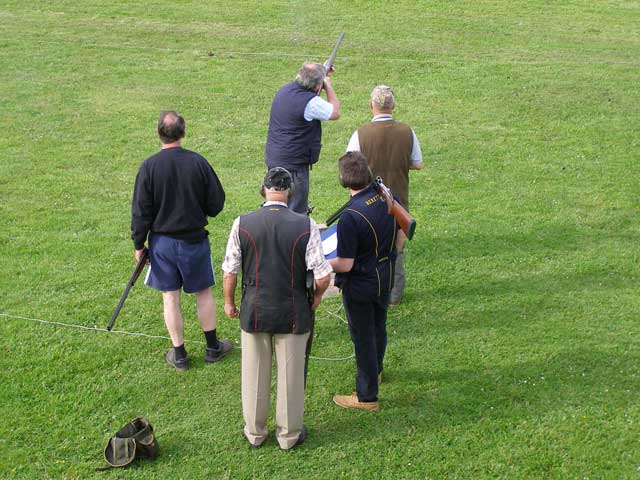
From Stand 4, four targets are presented:
● High House Single, then
● Low House Single, then a
● Simultaneous pair; the shooter states which target they will shoot at first
('High target please' etc), then calls: 'Pull'.
At this stand the High House- and Low House-targets appear to be moving quicker as they are directly in front of the shooter. The Simultaneos
pair is probably the most difficult Skeet pair due to the apparent speed.
Stand 5
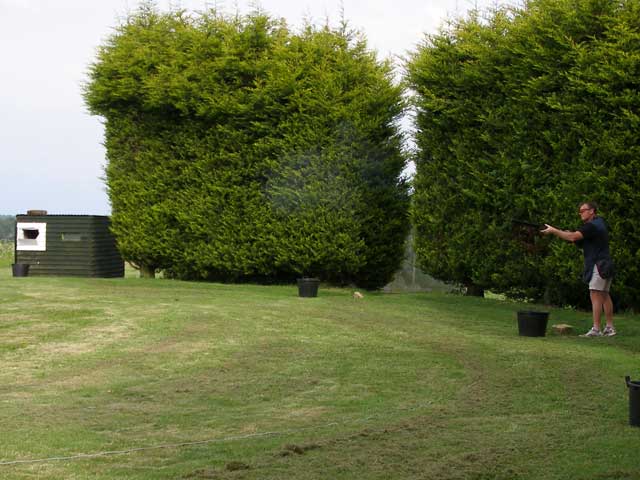
From Stand 5, two targets are presented:
● Low House Single, then
● High House Single
Note that the sequence of the singles is changed; Low House, rather than High House first.
Stand 6
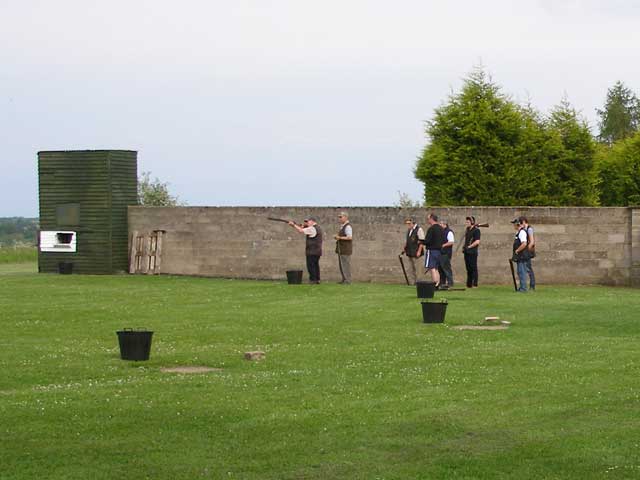
From Stand 6, four targets are presented:
● Low House Single, then a
● High House Single, then
● Simultaneous pair; Low House target shot first.
Stand 7
From Stand 7, four targets are presented:
● Low House Single, then a
● High House Single, then
● Simultaneous pair; Low House target shot first.
The total number of targets listed about is: 24. The first target missed (say: Low House Stand 2) is re-presented and shot a second time. If none are missed, the shooter can elect to shoot eith the Low- or High- target at Station 7.